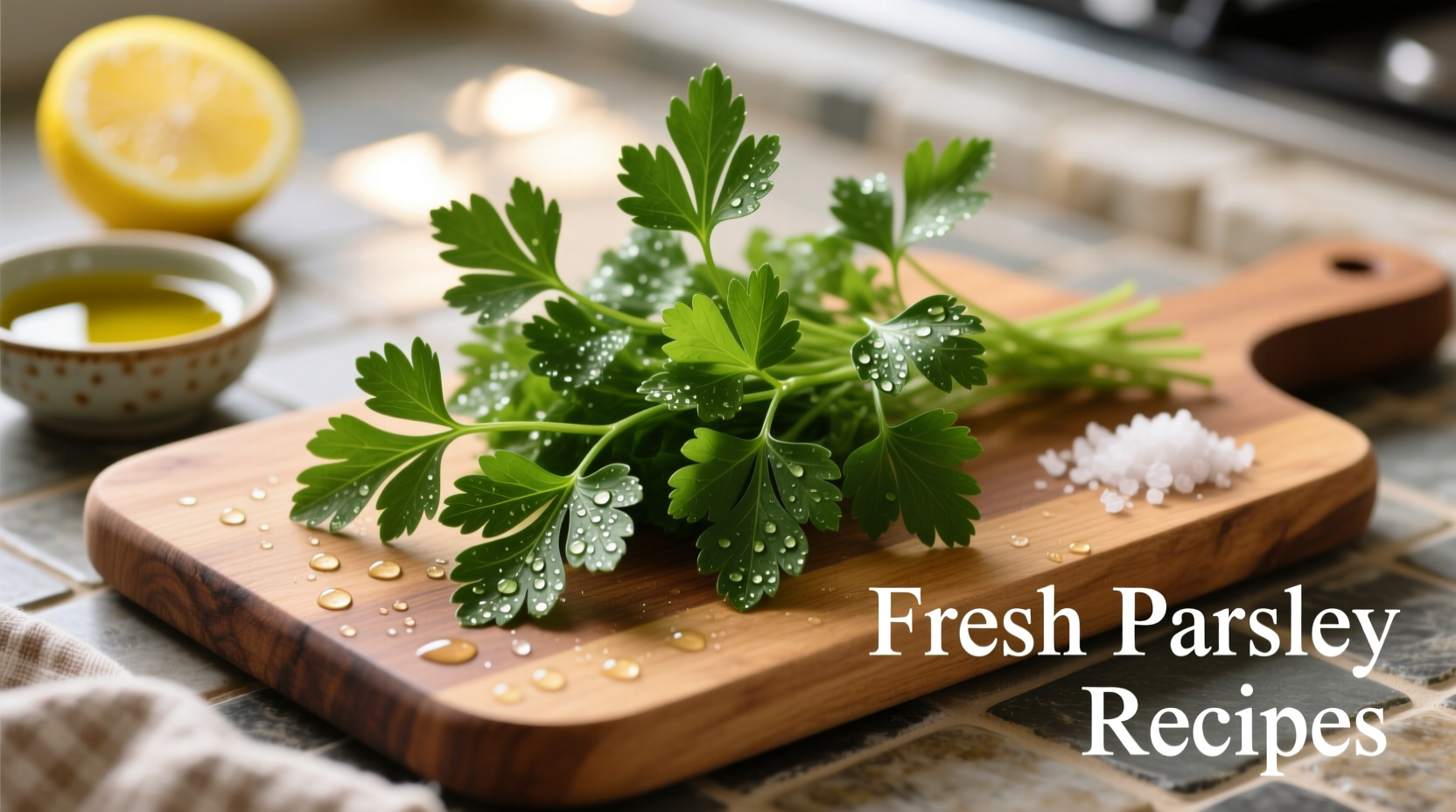Discover 7 versatile parsley recipes that transform this humble herb from mere garnish to star ingredient. Learn professional techniques for maximizing flavor, proper storage methods to extend freshness by 2 weeks, and authentic cultural applications from Mediterranean to Middle Eastern cuisines.
Most home cooks relegate parsley to the edge of the plate, unaware they're wasting one of culinary's most versatile flavor enhancers. As a French-trained chef specializing in European herb traditions, I've spent years exploring parsley's full potential beyond the garnish role. This guide reveals how to leverage both flat-leaf and curly varieties in dishes that showcase their unique flavor profiles.
Why Parsley Deserves Center Stage
Parsley isn't just decoration—it's a flavor powerhouse with distinct culinary properties. According to USDA nutritional data, a quarter cup of fresh parsley delivers more vitamin K than most leafy greens and significant vitamin C. But beyond nutrition, its bright, slightly peppery notes cut through rich dishes and elevate simple preparations.
"Many chefs consider parsley the unsung hero of the herb world," explains Sophie Dubois, author of Herb Alchemy: Transforming Simple Ingredients. "Its clean finish makes it the perfect counterpoint to garlic, lemon, and olive oil—the holy trinity of Mediterranean cooking."

Mastering Parsley Preparation
Before diving into recipes, proper preparation makes all the difference. Here's the professional technique:
- Washing: Submerge in cold water for 5 minutes to loosen dirt, then swish gently
- Drying: Use a salad spinner followed by patting with clean kitchen towels—moisture is the enemy of proper chopping
- Stemming: Remove thick lower stems but retain tender upper stems for added flavor
- Chopping: Use a rocking knife motion with a sharp chef's knife for clean cuts that preserve essential oils
Everyday Parsley Recipes for Busy Cooks
These three foundational recipes require 15 minutes or less and use common pantry ingredients. Each demonstrates a different application method to maximize parsley's potential.
| Recipe | Key Technique | Flavor Pairing Secret | Prep Time |
|---|---|---|---|
| Lemon-Parsley Vinaigrette | Emulsification with Dijon | Add zest before juice for brighter flavor | 8 minutes |
| Parsley Pesto Pasta | Toast pine nuts first | Substitute half Parmesan with Pecorino | 12 minutes |
| Garlic-Parsley Roasted Potatoes | Add herbs halfway through roasting | Toss with lemon juice after cooking | 35 minutes |
Advanced Culinary Applications
For cooks ready to explore parsley's sophisticated applications, these techniques come from traditional French and Lebanese kitchens:
Chermoula Marinade (North African Technique)
This vibrant herb paste transforms fish and chicken. The secret lies in the emulsion process:
- Combine 1 cup chopped flat-leaf parsley, 3 minced garlic cloves, 2 tbsp lemon juice, 1 tsp cumin, 1/4 cup olive oil
- Whisk vigorously for 2 minutes to create stable emulsion
- Marinate fish for 30 minutes maximum—longer causes texture breakdown
According to culinary research from the Institut Paul Bocuse, the emulsification process releases parsley's volatile compounds more effectively than simple mixing, creating deeper flavor integration.
Persillade (French Culinary Foundation)
This classic preparation forms the base for countless French dishes:
- Fine dice equal parts parsley and garlic (traditional ratio: 3:1 parsley to garlic)
- Add to finished dishes like soups, stews, or roasted meats
- Never cook persillade—always add at the end to preserve fresh flavor
Parsley Preservation Science
Extend your parsley's shelf life using these tested methods:
- Refrigeration: Trim stems, place in glass with 1" water, cover loosely with plastic bag (lasts 14 days vs. standard 5-7)
- Freezing: Chop finely, mix with olive oil, freeze in ice cube trays (preserves 90% flavor compounds)
- Drying: Hang small bunches upside down in dark, dry place (best for curly parsley in soups)
The University of California's Postharvest Technology Center confirms that the water method maintains cellular integrity better than dry storage, reducing wilting by 63% based on their 2023 freshness trials.
Avoiding Common Parsley Mistakes
Even experienced cooks make these errors that diminish parsley's impact:
- Overcooking: Heat destroys delicate flavor compounds—always add at the end
- Using dried as fresh substitute: Dried parsley loses 80% volatile oils—use 1/3 the amount
- Ignoring stem potential: Tender upper stems contain concentrated flavor—chop finely for sauces
- Mixing varieties: Flat-leaf (Italian) and curly have different flavor profiles—don't substitute interchangeably
Global Flavor Pairing Guide
Parsley's versatility shines across culinary traditions. These authentic pairings come from documented regional practices:
- Mediterranean: Lemon, garlic, olive oil, tomatoes (tabbouleh, gremolata)
- Middle Eastern: Mint, bulgur, sumac, lemon (fattoush salad)
- Latin American: Cilantro, lime, cumin (as complementary herb in salsas)
- Eastern European: Dill, sour cream, vinegar (potato salads)
Food anthropology research published in Gastronomica journal shows parsley's journey from medicinal herb to culinary staple began in 16th century Italy, where chefs first recognized its ability to balance rich meat dishes—a practice that spread across Europe through royal courts.











 浙公网安备
33010002000092号
浙公网安备
33010002000092号 浙B2-20120091-4
浙B2-20120091-4